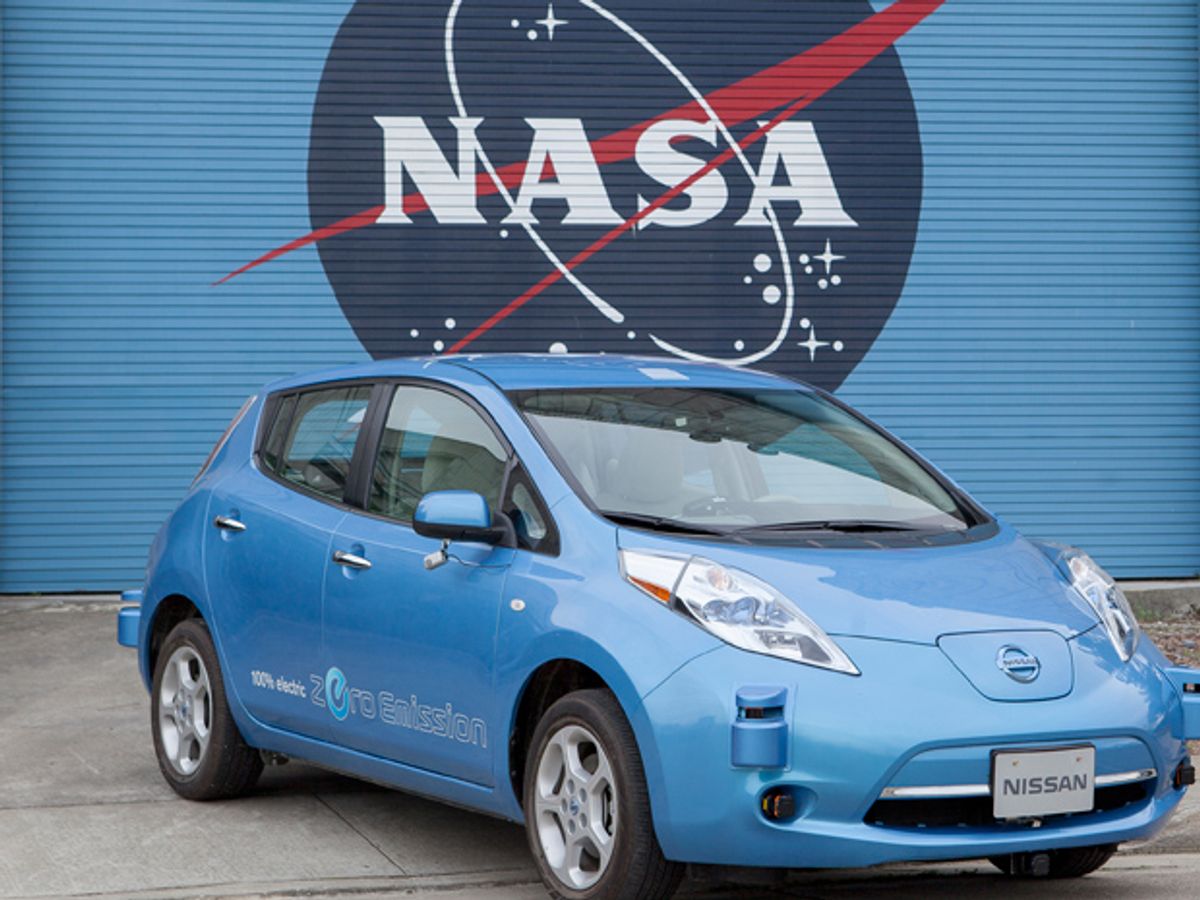Google’s self-driving cars won’t be the only robotic vehicles roaming NASA’s Ames Research Center at Moffett Field in California. The U.S. space agency has teamed up with automaker Nissan to test autonomous driving technologies that could find their way into future vehicles both on the road and in space exploration missions.
NASA hopes the five-year partnership can help improve the autonomous vehicle technologies available for its robotic rovers during Mars missions and other future space exploration. On Earth, Nissan has set a 2020 goal for the market debut of cars that can navigate without human intervention under most driving conditions. Researchers from both organizations aim to begin testing the first of a fleet of self-driving vehicles before the end of 2015.
“The work of NASA and Nissan—with one directed to space and the other directed to earth—is connected by similar challenges,” said Carlos Ghosn, president and CEO of Nissan Motor Co, in an 8 January press release. “The partnership will accelerate Nissan's development of safe, secure and reliable autonomous drive technology that we will progressively introduce to consumers beginning in 2016 up to 2020.”
The two organizations have cooperated on technological development in the past. For instance, Nissan used NASA’s research on neutral body posture in low-gravity conditions to develop more comfortable car seats. But hardware and software for self-driving cars could prove to be some of the most transformative technologies to reach mainstream acceptance in the coming years.
Ghosn has suggested that Nissan’s introduction of a commercially available self-driving car could even take place as soon as 2018. He mentioned legal considerations rather than technological roadblocks as the biggest potential stumbling block along any timeline. On the other hand, Nissan engineers have emphasized a less firm deadline in order to leave themselves more wiggle room.
Other observers say that, Ghosn’s reassurances notwithstanding, there remains a list of technical and regulatory hurdles that must be cleared before self-driving cars can be expected to make the world’s roads at least as safe as they are with humans in control. The toughest part of the challenge for robotic cars will be dealing with a mix of automated vehicles and ordinary vehicles driven by humans.
As I noted earlier, the “zero-emission,” self-driving vehicles to be tested by Nissan won’t have the run of the place. They’ll share the NASA testing grounds with potential competitors such as Google. Google has already been making use of the NASA Ames Research Center to test its own self-driving vehicle—a two-seat, all-electric prototype that dispenses with the traditional steering wheel and accelerator and brake pedals in favor of just a start and stop button. The Silicon Valley giant hopes to begin tests of its unoccupied self-driving cars on the NASA research campus sometime this year.
Other carmakers are also racing to develop self-driving vehicles. Mercedes-Benz has begun testing its own robocars at an abandoned naval base in Concord, Calif. Meanwhile, Elon Musk has promised that his Tesla electric cars will be able to operate without human assistance for 90 percent of miles driven starting this year.
Jeremy Hsu has been working as a science and technology journalist in New York City since 2008. He has written on subjects as diverse as supercomputing and wearable electronics for IEEE Spectrum. When he’s not trying to wrap his head around the latest quantum computing news for Spectrum, he also contributes to a variety of publications such as Scientific American, Discover, Popular Science, and others. He is a graduate of New York University’s Science, Health & Environmental Reporting Program.



